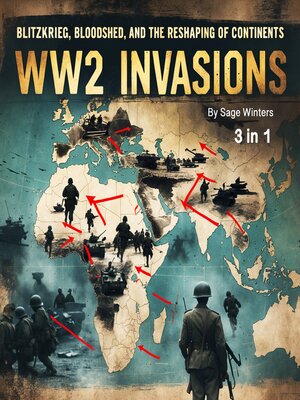WW2 Invasions
audiobook (Unabridged) ∣ Blitzkrieg, Bloodshed, and the Reshaping of Continents (3 in 1)
By Sage Winters

Sign up to save your library
With an OverDrive account, you can save your favorite libraries for at-a-glance information about availability. Find out more about OverDrive accounts.
Find this title in Libby, the library reading app by OverDrive.



Search for a digital library with this title
Title found at these libraries:
| Library Name | Distance |
|---|---|
| Loading... |
This book consists of three titles:
- Blitzkrieg: The outbreak of World War II in 1939 heralded the arrival of a new era in military strategy, characterized by speed, surprise, and relentless coordination. At the heart of this revolution was Blitzkrieg, or "lightning warfare," a doctrine developed and executed primarily by Nazi Germany. Blitzkrieg was a military strategy that sought to overcome the static, trench-based warfare that had defined World War I. The tactics were designed to strike quickly and decisively, bypassing traditional defenses and causing maximum disruption. Its goal was not just to win battles but to create a psychological shock, overwhelming the enemy with rapid, coordinated strikes before they could mount a defense.
- Operation Overlord: Operation Overlord, the Allied invasion of Normandy on June 6, 1944, stands as one of the most significant military operations in modern history. Known globally as D-Day, it marked the beginning of the end of Nazi occupation in Western Europe and paved the way for the eventual defeat of Adolf Hitler's regime. The operation was not only a turning point in World War II but also in the broader scope of 20th-century history, reshaping the political, military, and cultural landscape of Europe.
- The Invasion of Italy: The invasion of Italy was one of the pivotal campaigns of World War II, playing a crucial role in the eventual Allied victory in Europe. Southern Europe, particularly Italy, was seen as a gateway for the Allies to weaken Nazi forces, divert their attention from the Eastern Front, and eventually push towards Germany. But the road to Italy was not a simple or straightforward one. It was a strategic decision shaped by both military considerations and political imperatives.







